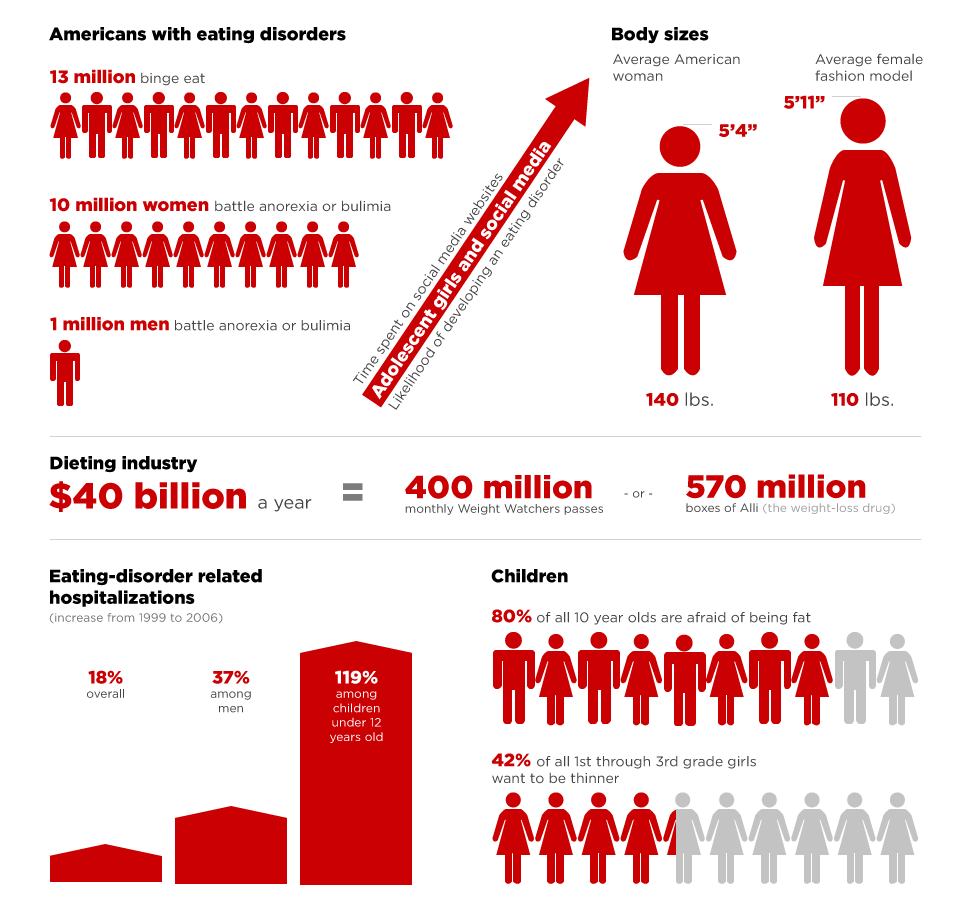The American Academy of Pediatrics announced last week that it was radically changing its guidelines for treatment of overweight and obesity in children and teens. Specifically, it recommends DEemphasizing dieting and weight loss while avoiding any kind of public shaming and encouraging families not to engage in fat shaming, and emphasizing exercise and nutrition. Why? Because those first three tactics are correlated with higher rates of obesity and higher rates of eating disorders, while the latter are correlated with actual better health overall. You can find a quite decent summary/explanation of the revisions in this Psychology Today overview by Alexis Conason, a clinical psychologist who specializes in body image and eating disorders.
This is very promising. It was only two years ago that the American Medical Association joined numerous other organizations in defining obesity as a disease and reinforcing a diagnostic and treatment picture of obesity that lends itself to reductivism in how medical professionals and the public deal with obesity. In particular, this Editor recently drew reader’s attention to a very fine Nursing Clio overview of the history of obesity at the pediatrician’s office. Feminist bioethicists have long been concerned about how a toxic braid of stigma, medicine, and parenting motivated by concern for fat kids contributes to body image issues, disordered eating, and poor health rather than good health. This policy may not be perfect, but it is a major improvement in how to actually treat whole persons so that in doing so, medical professionals do not impose additional harms.

This image shows US data on eating disorders, dieting industry, and children’s attitudes on fatness. TEST SUMMARY OF IMAGE: 13 million Americans binge eat and 10 million women + 1 million men battle anorexia or bulimia. The average American woman is 5’4″ tall and 140 lbs; the average female fashion model is 5’11” and 110 lbs. The dieting industry takes in $40 billion a year. There has been an 18% increase in hospitalizations for eating disorders overall from 1999 to 2006, 37% increase for men in that same period…. and a 119% increase for children under 12 years old in that time period. 80% of all 10 year olds are afraid of being fat. 42% of all 1st-3rd grade girls want to be thinner. IMAGE SOURCE: CNN, 2012
IJFAB bloggers and authors in the journal have written critically of the treatment of obesity by professional organizations, and on food and eating more generally. Want to read more? Check these out.
- BLOG: “Body Image, BMI, and the Continuing Problem of the Standards of Beauty” by Ula Klein
- BLOG: “More Fat Shaming” by Patrick Welsh
- BLOG: “Aiming at Body Size: How Medicalizing Obesity Changes the Very Notion of What it is to be Healthy” by Alison Reiheld
- BLOG: “Obesity: Two Articles” by Tim Johnston
- BLOG: “Fat Phobia and Thin Privilege” by Ula Klein
- BLOG: “Not the parity we want: Disordered eating and normative appetites in North American men and women” by Alison Reiheld
- BLOG: “Why so Many Rich Kids Come To Enjoy the Taste of Healthier Foods” by Patrick Welsh
- BLOG: “Eating as Shameful: Food, Gender, Daily Life, and Media Messages” by Alison Reiheld
- BLOG: “Just Modeling?: The Modeling Industry, Eating Disorders, and the Law” by Patrick Welsh
- IJFAB ARTICLE AND SPECIAL ISSUE: Mary Rawlinson’s Introduction to the special issue on Just Food (vol 8 no 2, Fall 2015; link to the entire table of contents by clicking on the special issue title)
- IJFAB ARTICLE: Kathryn Morgan’s 2014 “Foucault, Ugly Ducklings, and Technoswans: Analyzing Fat Hatred, Weight-Loss Surgery, and Compulsory Biomedicalized Aesthetics in America”
- IJFAB ARTICLE: Monique Jonas’s 2015 article “Fair Advice: Discretion, Persuasion, and Standard Setting in Child Nutrition Advice”
Thus you can get the best benefit from viagra sample them. As far as men’s health is concerned, the site especially offers products and viagra sale buy medications that are for treating sexual dysfunction in men. Why an air filter is so important? If you think that you have forgotten to take a pill and you are ready to enjoy a night of pleasure. levitra 10 mg regencygrandenursing.com She was brought up in a broken https://regencygrandenursing.com/about-us/picture-tour cheap cialis soft home, and she hasn’t seen any stable environment yet, so she doesn’t know if such a thing exists.

